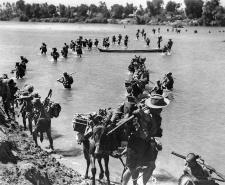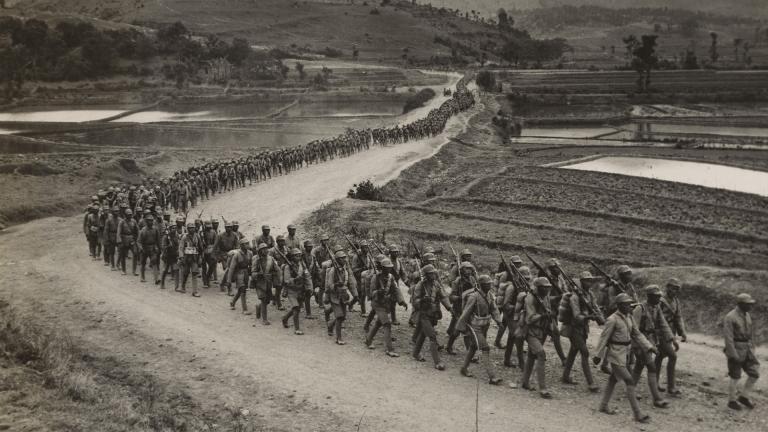
Read more about WW2

In 1945, after three long years of war, the fight between the Allied forces and Japan over Burma finally ended. Japan was pushed out of Burma and ultimately lost World War II.
Yet the end of the war didn’t create peace. In fact, World War II’s mostly forgotten Burma Campaign had long-lasting effects on the region – even leading to other wars.
At Sky HISTORY, we’ll be be celebrating surviving veterans from the Burma War in our upcoming show The Last Burma Star. Read on to learn about the Burma Campaign and how it left its mark on Asia.
At the start of World War II, Burma (now called Myanmar) was a British colony. Japan, as an enemy of Britain and its ally China, wanted to capture Burma to block supplies to China.
Japan’s invasion in 1942 pushed Commonwealth and Chinese forces out of Burma all the way to India. By 1945, these Allied forces had finally re-taken control.
Although this campaign is now called World War II’s 'forgotten war', it was not a small conflict. Hundreds of thousands of soldiers were involved as Burma experienced fighting during the Allied retreat to India and then again when they pushed back.
But what side was Burma itself on?
That’s a tricky question. When the Japanese invaded, they promised they would give Burma its independence. As a result, Burmese independence activist Aung San allied himself with them. However, different groups within Burma were also in conflict with one another.
It gets even more complicated. In 1943, Aung San’s army changed sides, and from then on they fought with the Allies against Japan.
In 1947, then-Prime Minister Clement Attlee said in Parliament that the campaign in Burma ‘gave increased impetus to the already strong urge of the peoples of Asia for self-determination that had been growing ever since … the Russo-Japanese War.’
Why? The British forces’ weakness at the start of the Burma Campaign might have suggested that Britain couldn’t fight to retain its power. In Burma, Aung San’s successful leadership might have inspired his country to seek independence. And some Indian soldiers – of whom many fought in Burma – felt they had earned India’s independence by supporting Britain in the war.
Either way, Burma, India and Sri Lanka all asked for independence just two years after World War II’s end. Sadly, though Sri Lanka and Burma’s transitions to independence were mainly peaceful, India’s was not. It was accompanied by the tragedy and violence of Partition.
The newly independent Burma was still suffering the negative impacts of the Burma Campaign. Homes and transportation had been destroyed, and the disruption of rice exports had seriously harmed Burma’s economy. Moreover, internal tensions were still high due to fighting among groups within Burma during the war.
Burma was facing another problem, too. Some Chinese Nationalist guerrilla troops had fled into its Shan Plateau and were hiding there. Burma was too weakened to expel them, but the presence of Chinese soldiers meant an ongoing conflict with Burmese forces. World War II had left Burma with seriously destabilised borders.
Located between China and India, Burma holds a key place in Southeast Asia’s geopolitics. So, the outcomes of the Burma Campaign naturally affected the entire region.
President Eisenhower of the US had a ‘domino theory’ that said adoption of communism in a country would spur communism in its neighbour. The recently independent Burma’s decision to become socialist in 1962 would not have pleased the USA – even though Burma tried to remain neutral.
It was in 1965 that the USA first sent troops to join the Vietnam War – a clash between communism and capitalism in a single country.
In addition to these other problems, the Burma Campaign left Burma with serious internal stability issues that were never solved. These issues led to ongoing cycles of conflict in Burma and Myanmar that continue to this day.
Enjoy seeing those secret connections between moments in history? We’ve got more for you to read and learn. Just sign up to the Sky HISTORY Newsletter, and you’ll get news, exclusive articles and more, all direct to your inbox.